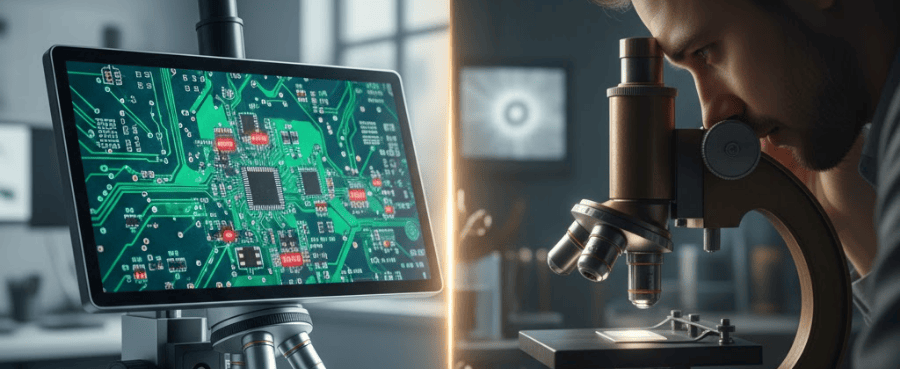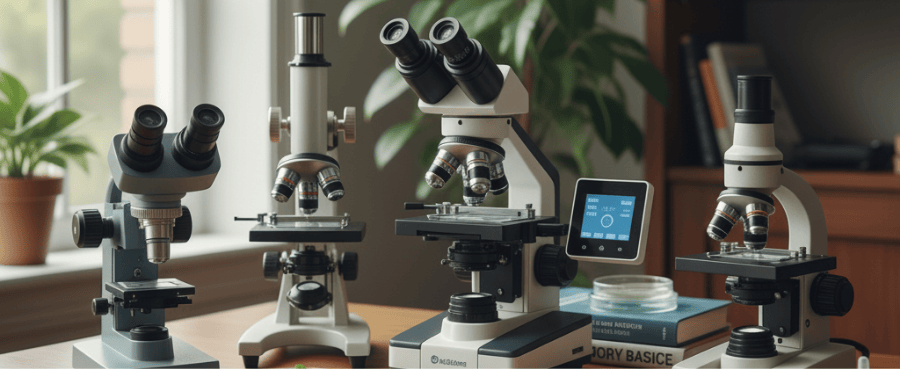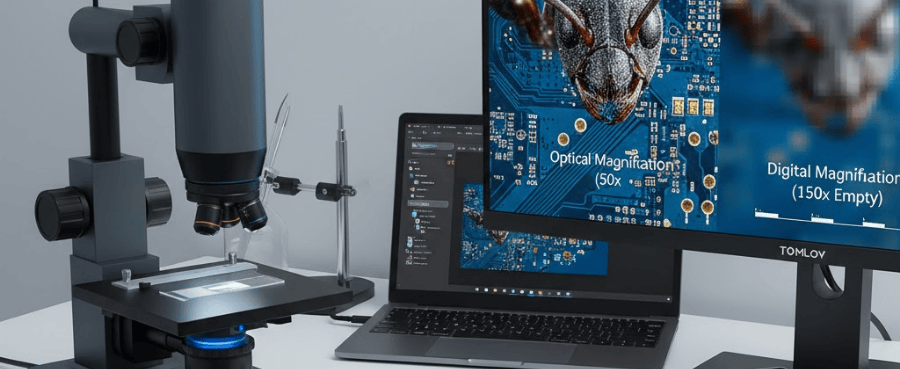For many users, the short answer is yes. Digital microscopes are worth it due to their remarkable ease of use, superior capabilities for sharing and recording images, and significant ergonomic benefits. These features can dramatically improve efficiency and collaboration in fields like education, research, and industrial inspection.
However, they aren't a one-size-fits-all solution. This guide will help you understand the key advantages and potential limitations to determine if a digital microscope is the right choice for your specific needs, especially when compared to traditional models that may offer extreme magnification.
Key Benefits of Digital Microscopes
Ergonomics and Comfort
Viewing images on a monitor eliminates the neck and eye strain associated with traditional eyepieces, allowing for comfortable, prolonged use.
Collaboration and Sharing
The screen-based display enables multiple people to view specimens simultaneously. Digital images and videos can also be shared instantly, facilitating seamless remote collaboration.
Documentation and Analysis
High-quality images and videos can be captured and saved with a single click. Integrated software provides advanced tools for measurement, annotation, and image processing, enhancing data analysis.
Efficiency and Accuracy
Features like auto-focus and high-resolution imaging streamline the inspection process. Digital magnification and superior image clarity improve the accuracy of identifying fine details and potential defects.
Related Reading:Digital vs. Optical Microscopes: An In-Depth Comparison

Key Considerations Before Buying a Digital Microscope
1. Your Primary Use Case
Before deciding whether a digital microscope is worth the investment, assess your primary use case. Here are a few examples:
-
Electronics Repair: If you’re inspecting circuit boards or fine details, a high-magnification digital microscope with clear resolution is essential.
-
Education: For classrooms or training environments, a digital microscope’s ease of use and ability to share images easily make it an excellent choice.
-
Research: Researchers who need detailed images or video documentation will benefit from the built-in capture functions.
2. Resolution and Image Quality
Digital microscopes can vary widely in resolution. Higher resolution means better image clarity. For basic needs, 720p might suffice, but for precision work like electronics inspection or research, a 1080p or even higher resolution is recommended.
3. Budget Considerations
While digital microscopes offer many benefits, they come with a higher price tag compared to traditional models. Consider your budget and weigh it against the features you need. If high magnification, portability, or documentation are crucial for your work,
the extra investment may be worthwhile. However, for simple tasks, a traditional microscope might still be the more cost-effective choice.
How to Choose the Best Digital Microscope for Your Needs
Step 1: Determine Your Budget
Know what you're willing to spend. Digital microscopes range from affordable models to high-end systems, so it's important to set a price range based on your needs.
Step 2: Assess Your Requirements
What will you be using the microscope for? Whether it's for casual use, educational purposes, or professional inspection, different use cases require different features.
Step 3: Check the Resolution
Look for a microscope that matches the resolution you need. For general use, a resolution of 720p is sufficient, but for precision tasks, consider 1080p or higher.
Step 4: Consider Additional Features
Some models offer additional features like built-in lighting, HDMI output, or even Wi-Fi connectivity. Some models offer additional features like built-in lighting, HDMI output, or even the advanced imaging capabilities of a [3D Microscope], especially for more professional settings.
Tomlov specializes in advanced 3D digital microscopes designed for detailed inspection and precision work. Their products provide enhanced depth perception, making them ideal for analyzing the complex topography of electronics, coins, and other intricate objects. The site positions these powerful imaging tools as accessible solutions for professionals and hobbyists seeking greater analytical accuracy.
Step 5: Read Reviews
Check online reviews from other users with similar needs. This can help you understand the strengths and weaknesses of different models and make a more informed decision.
Related Reading:How To Use a Digital Microscope
Step-by-Step Decision Guide
Use this quick guide to make your decision:
What’s Your Primary Use?
-
Electronics inspection or research: Go for a high-resolution model.
-
Classroom or educational use: Prioritize ease of use and image-sharing capabilities.
Do You Need Portability?
-
Yes: Choose a compact and lightweight model.
-
No: You can opt for a larger, more feature-rich microscope if it stays in one place.
How Important is Image Capture?
-
Very important: Choose a model with built-in image capture and video recording.
What’s Your Budget?
-
Stick to your budget while considering the most important features for your work.

FAQ Section
Q1: What is the magnification range of a digital microscope?
Digital microscopes typically offer magnifications from 10x to 500x, with some high-end models offering even greater magnification.
Q2: Can digital microscopes be used for educational purposes?
Yes, they’re ideal for teaching, as they allow easy viewing and sharing of images with students, making learning interactive.
Q3: Are digital microscopes better than traditional ones?
It depends on your needs. Digital microscopes offer convenience, portability, and easy documentation, but traditional microscopes may be better for precise, high-magnification work.
Q4: How much does a digital microscope cost?
Prices range from $50 for basic models to $1000+ for professional-grade models with advanced features.
Q5: Can I use a digital microscope for soldering and circuit board inspections?
Yes, digital microscopes are commonly used for inspecting small electronic components, offering clear, high-resolution images ideal for this work.
Conclusion
In conclusion, whether a digital microscope is worth it depends on your specific needs. If you require high magnification, portability, and the ability to capture and share images easily, then a digital microscope is an excellent investment. Use the decision guide above to make the right choice based on your use case and budget. While traditional microscopes still hold value, digital microscopes are increasingly becoming an essential tool for many industries.




Leave a comment
All comments are moderated before being published.
This site is protected by hCaptcha and the hCaptcha Privacy Policy and Terms of Service apply.